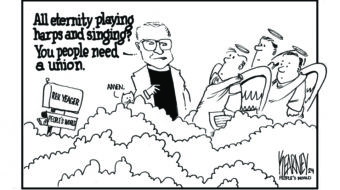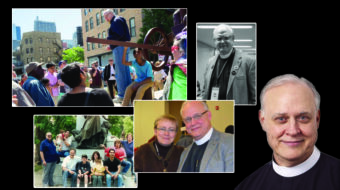There are less religious people in America than ever, and that percentage is far higher than in many European countries. A new report tries to explain why, and what future trends could be.
But the report‘s authors say that more than just decline is in store for religion in some countries. It may be on the verge of extinction in nine nations: Australia, Austria, Canada, the Czech Republic, Finland, Ireland, the Netherlands, New Zealand and Switzerland.
It should be noted that this means the decline in the number of people who claim to adhere to any organized religious group. In surveys, fewer people than previously said that they were Catholics, Protestants, Islamic or any other religion. These numbers do not portray what these people, who no longer consider themselves followers of any particular faith, actually believe. Some are atheists, some are agnostics and some may have other ideas entirely.
Researchers studied the ongoing decline of religion around the world and nationally – the unaffiliated are the fastest growing religious minority in all 50 states of the U.S. – and tried to understand the dynamics responsible for the decline’s speed. Instead of trying to find an ideological reason, they looked at religious affiliations as social groupings in society, and tried to set a statistical framework that would allow predictions.
“We have developed a general framework for modeling competition between social groups and analyzed the behavior of the model under modest assumptions,” the scientists explained. “We found that a particular case of the solution fits census data on competition between religious and irreligious segments of modern secular societies in 85 regions around the world.”
The researchers posited that religions are like any other social group: political party, fraternity and so on, and that people adhere to them if there are benefits. These perks could be either material – better job, standing in the community, friendship – or spiritual – a sense of connection to a higher cause. Generally, the more members a group has, the more benefits, and more people are attracted. This tendency boosts participation – and the converse is also true. A group with fewer members offers less benefits and, consequently, current adherents tend to drift.
Researchers sought to prove that assumption and to come up with a model that could predict future motion.
The results are unlikely to bring joy to the pope or any other spiritual leader: “The model indicates that in these societies the perceived utility of religious non-affiliation is greater than that of adhering to a religion, and therefore predicts continued growth of non-affiliation, tending toward the disappearance of religion.”
Priests, rabbis and imams shouldn’t fold up their tent just yet, though. While the science behind the study – nonlinear dynamics – has been used to accurately predict which languages will die out and which will not, and when, religious identification is perhaps even more complex.
The current model suggests only two groups that compete for adherents: the religious and the non-religious. Further, it assumes a complete uniformity of society, not taking into account geographical distributions and the impact of other divisions.
One of the researchers, Dr. Richard J. Wiener, told the American Physical society yesterday that he and his colleagues were working to strengthen the model. Still, Wiener told the BBC, the findings of the original report are “a suggestive result.”
Will religion actually become extinct? God only knows.

MOST POPULAR TODAY

High Court essentially bans demonstrations, freedom of assembly in Deep South

Zionist organizations leading campaign to stop ceasefire resolutions in D.C. area

UN warns that Israel is still blocking humanitarian aid to Gaza


U.S. imperialism’s ‘ironclad’ support for Israel increases fascist danger at home






Comments